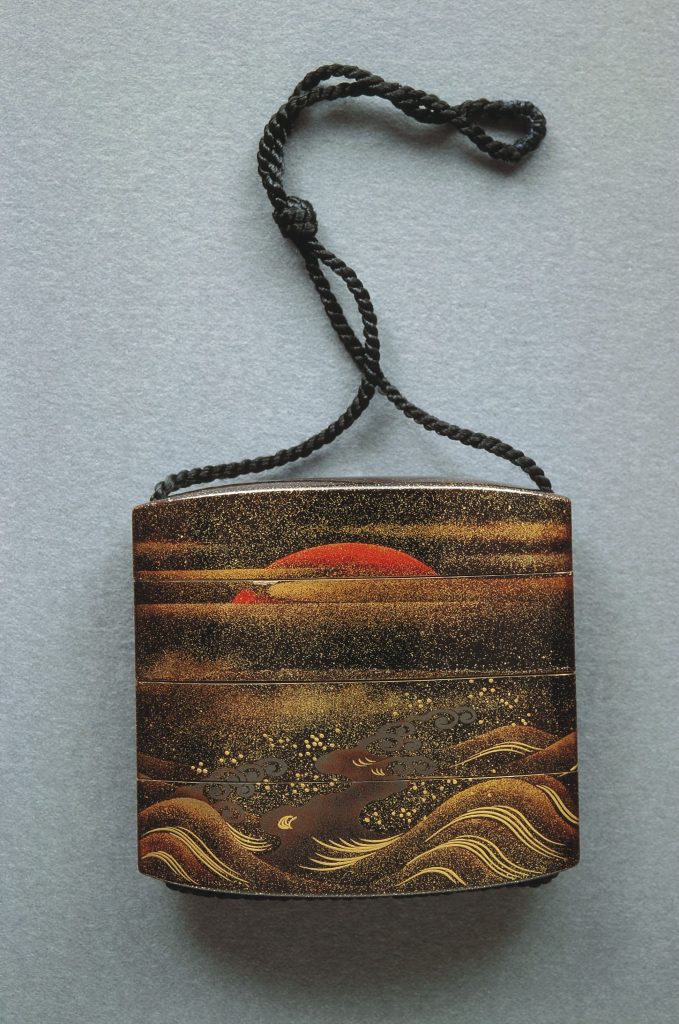
Inv. M.1137 © RMAH, Brussels.
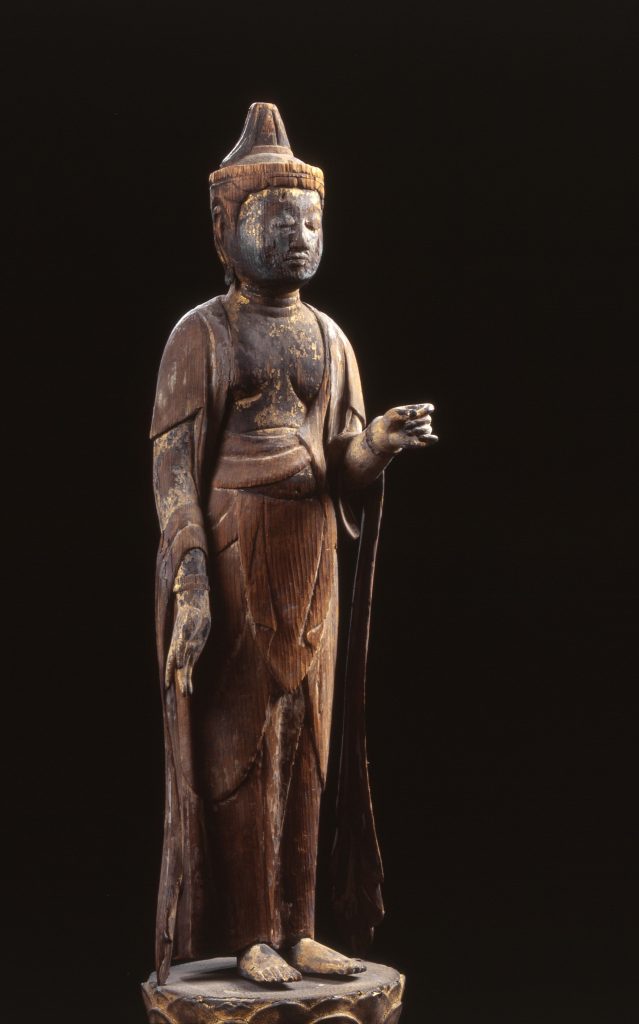
Inv. J.3430 © RMAH, Brussels.
With only a very small proportion of lacquered objects on display (less than 5 %) in the permanent exhibition, the collection of Asian lacquer of the Royal Museums of Art and History is not well-known by visitors.
The lacquer collection of the museum came from different parts of the world: Japan( fig. n°1, fig. n°3), China (fig. n°2, fig. n°8), Southeast-Asia (fig. n°4), Korea (fig. n°5). Before the closing of the Museums of the Far East (Chinese Pavilion-Japanese Tower-Museum for Japanese Art), an important part of the lacquer from the Japanese collection was presented in temporary exhibitions. Today most of it is hidden in the storage rooms.
The PHySICAL project in the Museum aims to rediscover these lacquer collections through different phases (see below: work-packages), to contribute to the general knowledge (identification, digitalisation etc.), to preserve and treat (conservation-restoration treatment: cleaning, preventive conservation, etc.) some of them but also to present them in the galleries.
In order to understand and solve the complexity of the conservation, the treatment and especially the cleaning of Asian lacquer objects, an interdisciplinary and international team was set up. During the four years research there’ll be a close collaboration between curator, conservator, scientist and all the people involved in the preservation of the lacquer objects within the museum.
Nathalie Vandeperre, curator of the East Asian department (China-Japan-Korea) and of the Museums of the Far East (Chinese Pavilion-Japanese Tower-Museum of Japanese Art), is the coordinator in the museum for this research project.
Bowi Quibus is scientific collaborator in charge of the Indian and Southeast-Asian department.
Delphine Mesmaeker, Asian lacquer and polychrome sculpture conservator, is in charge of the conservation and restoration of the lacquer object in the museum during the project.
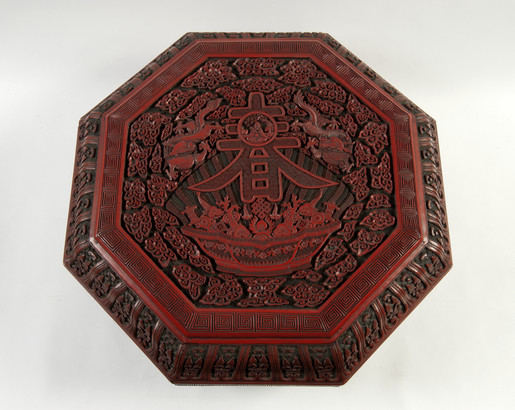
Fig n° 3. Box. Red carved lacquer on wood. China, 19th century Inv. EO.2418 © RMAH, Brussels. 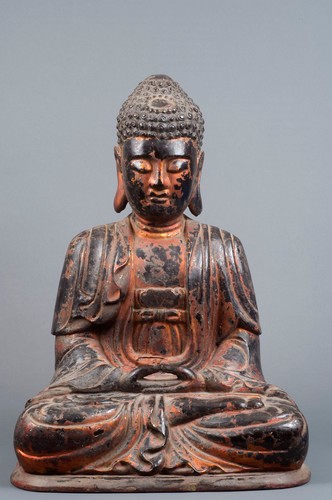
Fig n° 4. Lacquered and gilded Buddha, Vietnam 19th-20th century. Inv. EO.2759 © RMAH, Brussels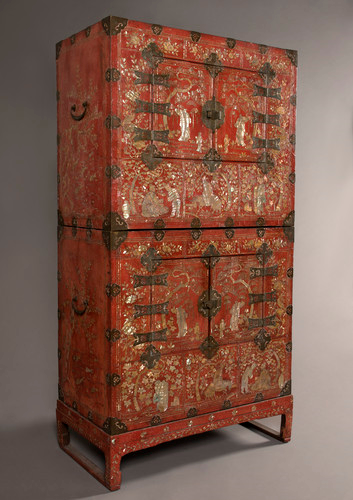
Fig. n°5. Stacked chest, lacquer on wood with mother-of-pearl inlay, Korea, end of Choson period. Inv.KO.003. © RMAH, Brussels.
Work-Package 1 Study of the Asian lacquer objects in the collection
This first phase of the research is focused on the update of the inventory and the realisation of a condition assessment of a selected number of lacquered objects.
The update of the inventory is the starting point of our work within the collection. We need to identify and to clearly know how many lacquered objects we have in the collections.
This inventory will document and summarize the information of the objects in the collection and includes the identification, the inventory number and data on the acquisition, dimensions, characteristics of the substrate and lacquer surface, condition assessment and localisation in the museum. It will serve as a solid foundation in selecting relevant objects within the further steer of the project.
The condition reports will be limited to a selected number of lacquered objects and are divided into six parts: identification of the object, historical research, technical research, identification of alterations, treatment proposition and advices concerning preventive conservation.
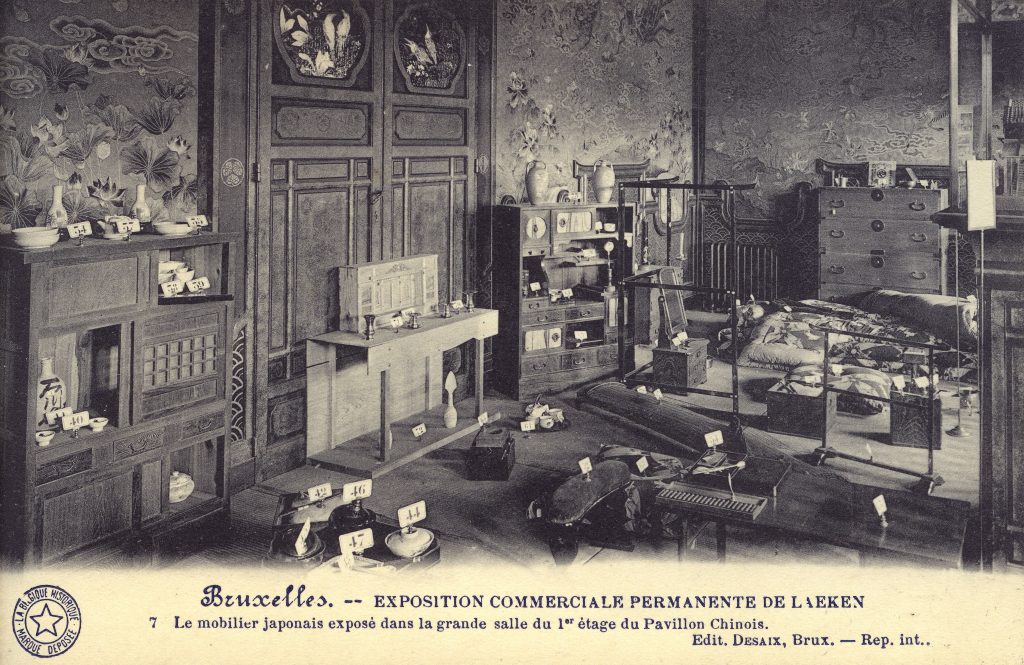
-The historical research will focus briefly on the art history, followed by the history of the object in the museum and the impact of the latter on its current condition.
-The identification will consist of the exact description of the object, its traditional use, its inventory number or any other relevant metadata.
-The technical research concerns the description of the construction of the object by observation and scientific analyses, the decoration technique will be documented.
-The fourth part of the condition report concerns an assessment of the current condition, in order to have an overview of all modifications, and to be able to follow any future possible changes.
-The reports on the current condition will include all the damages, which will be mapped and documented in a scheme. Degradation phenomena will be identified and mapped in several schemes.
-A proposal for treatment will be drawn for a selection of lacquered objects, with future exhibition in the museum as a primary goal.
The last phase concerns recommendations for preventive conservation and the long-term preservation of the lacquered objects in the Asian collections of the RMAH as well as advices on exhibition (conservation boxes, rotation of the collection, UV blinds, time of exposure, etc.).
The close collaboration between all the partners of the project during this phase is essential. Information exchange between the curator, the scientist and the conservator are of key importance for optimal conservation treatment applications.
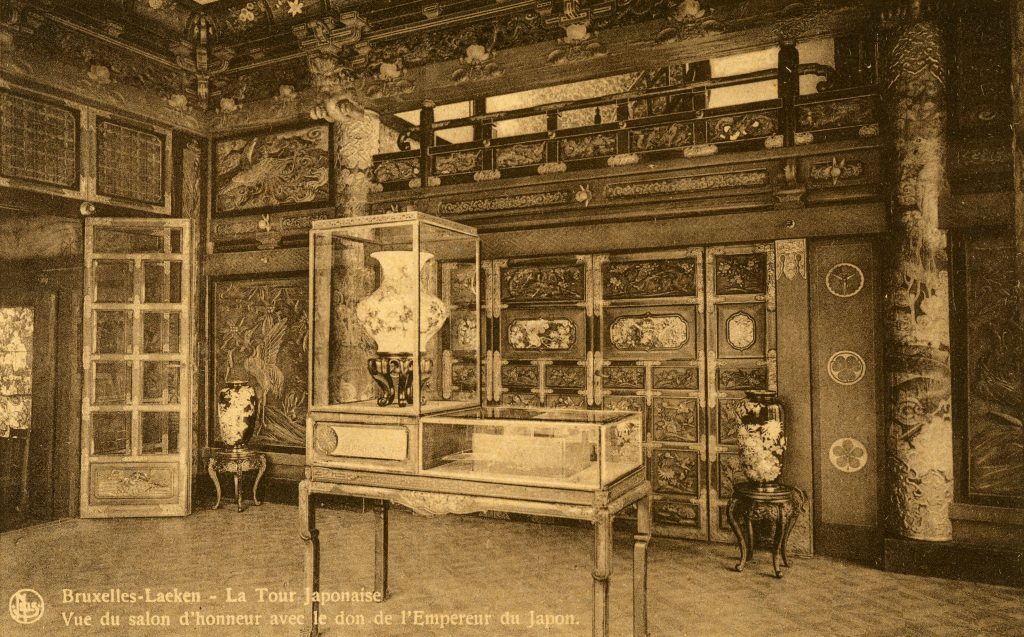
Fig. n°7. Ground floor of the Japanese tower. 1913, opening of the commercial exhibition, with presentation of gifts from the Emperor Meiji © RMAH, Brussels. 
Fig n°8. Fumibako, document box. Gilded laquer on wood. Japan, c.1900. Inv. TJ.003b. Gift from the Meiji Emperor © RMAH, Brussels.
Work-Package 2 Technical study of the objects
The study of the existing literature will be conducted in parallel witha thorough technical analysis of selected museum objects (in collaboration with the scientific team). Firstly, non destructives analyses will be executed: microscopically observation, X-radiography and UV photography.
To clearly understand the evolution of the lacquer and its alterations, we will proceed to more invasive examinations like cross-sections, in order to reveal the multi-layered structure.
The main goal of this part of the project is to identify the lacquer composition of the selected objects and to understand their construction.
Work-Package 4 Inventorying and evaluation of cleaning procedures
Because cleaning of degraded lacquer is an important and complex part of the treatment of an object, an evaluation of the different existing procedures will be made. This one will be based on the existing literature concerning the cleaning treatment of complex surfaces and not only concerning lacquer.
The international survey will be based on interviewing conservators. The main goal of the survey is to have an overview of the solvent or aqueous bases cleaning procedures which are most commonly used by professionals. The result of this will be a precious help in focusing our research.
Work-Package 7 Evaluation of the physico-chemical aspects of Asian lacquered surfaces, modified through ageing and cleaning.
In order to be valuable to conservation practice, it is important not only to focus on the chemical modifications, but also on the physical properties. Meaning the chemistry of the surface has to be related to something which can be observed. This visual appearance is often used in the evaluation of a good versus a poor conservation treatment. The actual visual appearance is not measurable, therefore smaller aspects of the visual appearance known as physical properties, such as gloss, hardness and color are taken, which can be measured, whereas they represent only partially the complete visual appearance. The study of the physical properties is essentially not new, because this has been investigated before in conservation studies. However, studying swelling and leaching parameters (see other work packages) and comparing these to physical properties, is innovative and important in order to develop the cleaning treatments.
The following procedures will be carried out to study the visible modifications: gloss, hardness, colour, pH, fluorescence and micro-cracking.
Work-Package 9 Cleaning of a selected number of lacquered objects
The methodology and especially the selection of the solvent(s) for the cleaning of a selected number of lacquered objects from the collection, will be based on the outcome of the scientific research conducted on the mock-ups. The results will have to be decisive and proven to be safe before the method is applied on objects from the RMAH collection. Decisions on the application of the methodology established during the research will be taken in dialogue with the curator and all other partners.
Work-package 10 Valorisation
All work carried out in the previous work-packages will lead to a better insight in the behaviour of Asian lacquers after cleaning treatments. Guidelines for (preventive) conservation of the objects in RMAH collection will be formulated. The outcome of the study of the (aged) mock-up samples will hence allow to describe cleaning strategies, which will be of importance to policy makers responsible for the conservation and restoration of objects with Asian lacquer. These guidelines can be distributed amongst the partners’ networks, towards conservators, restorers and students.
Finally, the result of the research will be disseminated and shared via dedicated media with the conservators and the scientific community who has an interest in the field of the preservation of the Asian lacquer. Also, the public can also follow the evolution of the inventorying of the collection via our online catalogue: www.carmentis.be.